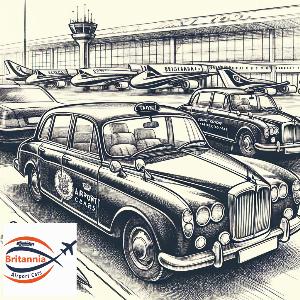During the height of World War II, Stansted Mountfitchet Airport, commonly referred to as Stansted, played a pivotal role in the aerial campaigns carried out by the Allies. The airfield, officially opening in 1943, saw the involvement of various units, including the 825th and 850th Engineer Aviation Battalions of the US Army and a segment of the British Royal Engineers. These battalions were instrumental in the construction and operations of the base. Their dedication was evident in the parade that marked the opening ceremony, showcasing unity between the American and British forces.
As part of the USAAF Eighth Air Force,cab to Stansted was a crucial hub for heavy-bomber aircraft. However, its significance didn't end there. The base was more than just a launching point for bombing raids over Nazi-occupied territories. It was also a vital center for the maintenance and supply of B-26 bombers. These aircraft were critical to the Allies' strategic bombing campaigns, targeting enemy infrastructures, logistics, and troop concentrations..
London Cab to Stansted's role, particularly in supporting major overhauls and modifications of B-26s, underscores the complexities of wartime logistics. Every bomber that took off from its runways was a culmination of countless hours of work, involving everything from routine maintenance to major repairs and modifications. This ensured that the aircraft were in peak condition for their perilous missions over enemy territories.
The aftermath of D-Day, the massive Allied amphibious invasion of Normandy in June 1944, brought about a change in Stansted's operations. As the Allies advanced and established airfields in liberated areas of France, the major overhauling activities of B-26s at Stansted were transferred closer to the front lines. However, the airfield remained crucial, serving as a storage and staging area to support aircraft operations on the European continent. This transition is a testament to the fluid nature of wartime operations, where bases and facilities needed to adapt rapidly to the evolving needs of the war effort.

















